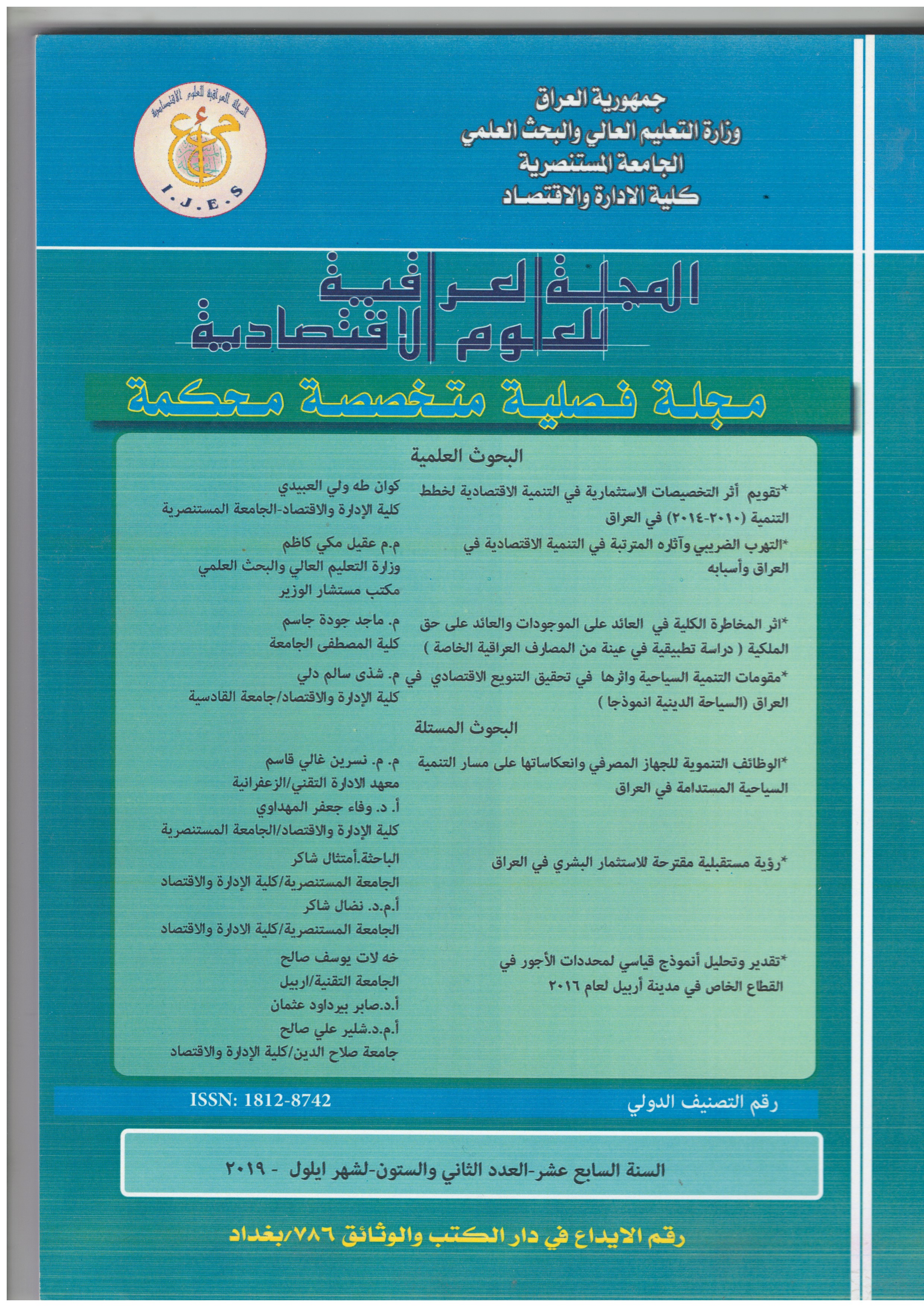Evaluating The Impact Of Investment Allocations on the Economic Development Of Development Plan (2010-2014) In Iraq
Keywords:
Abstract: From our analysis of the financial table of investment allocations in the national development plans (2010-2014), it was important, and it was possible to make structural changes in the national economy very large, if it was implemented and used efficiently and according to each sector of the economic sectors and according to its set goals. But through our assessment of the impact of investment allocations on economic development, it was characterized by a decrease in its operational efficiency and its failure to achieve diversification of the economic structure, and caused structural imbalances in the economic sectors, which affected the inability to correct the relationship between oil income growth and the movement of macro variables in the economy, with Weakening the long-term economic interconnectedness and the future of economic, social and environmental development in Iraq, therefore, no strategic goal for the plan has been achieved, in light of the low contribution rate of non-oil commodity (productive) activities to generating local GDP. Aesthetic, as its contribution rate was very low amounted to (12.5%), and in contrast, the crude oil extraction sector continued to occupy the main stage in generating GDP, where its rates reached (52%), and in terms of the low average per capita national income, it reached below the line level Poverty, and in terms of the high unemployment rate that has become a feature of the Iraqi economy, especially among graduates with primary and higher degrees of lack of compatibility between education and labor market outcomes, and in terms of a lack of social services, includingAbstract
Abstract:
From our analysis of the financial table of investment allocations in the national development plans (2010-2014), it was important, and it was possible to make structural changes in the national economy very large, if it was implemented and used efficiently and according to each sector of the economic sectors and according to its set goals.
But through our assessment of the impact of investment allocations on economic development, it was characterized by a decrease in its operational efficiency and its failure to achieve diversification of the economic structure, and caused structural imbalances in the economic sectors, which affected the inability to correct the relationship between oil income growth and the movement of macro variables in the economy, with Weakening the long-term economic interconnectedness and the future of economic, social and environmental development in Iraq, therefore, no strategic goal for the plan has been achieved, in light of the low contribution rate of non-oil commodity (productive) activities to generating local GDP. Aesthetic, as its contribution rate was very low amounted to (12.5%), and in contrast, the crude oil extraction sector continued to occupy the main stage in generating GDP, where its rates reached (52%), and in terms of the low average per capita national income, it reached below the line level Poverty, and in terms of the high unemployment rate that has become a feature of the Iraqi economy, especially among graduates with primary and higher degrees of lack of compatibility between education and labor market outcomes, and in terms of a lack of social services, including "service and treatment care for health institutions, due to the weak capacity of the population, education and higher education suffer from weak absorptive capacity of the educated students and all levels of education, and water processed for citizens in Baghdad and all other provinces is unfit for human consumption
Downloads






